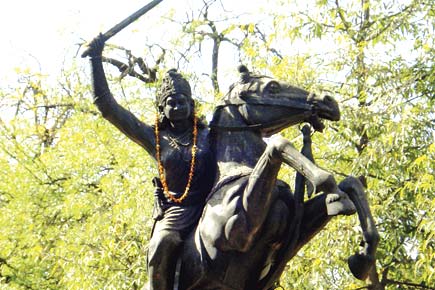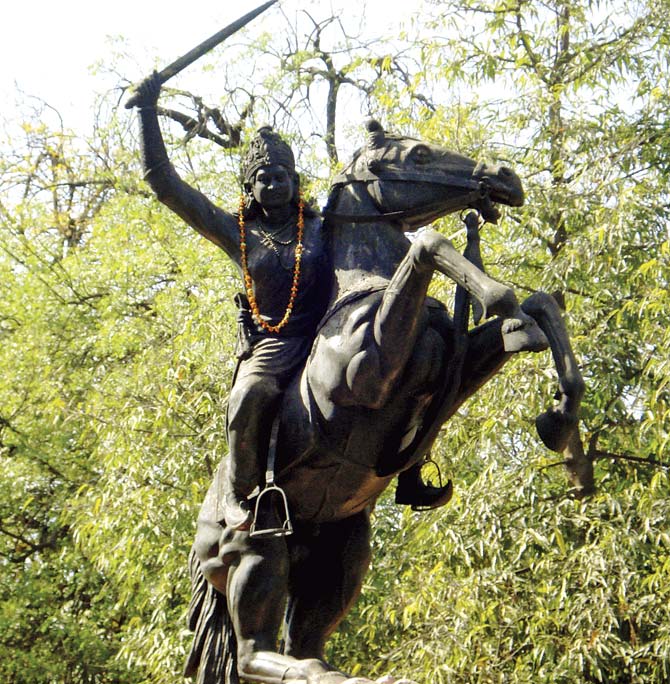The city — sliced, diced and served with a dash of sauce

Make plans to cool off in Sikkim
The Bombay Natural History Society is holding its North Sikkim camp from April 18 to 22 an ideal opportunity to escape the heat and head for the hills, literally. Located in the Yumthang Valley, the Shingba Rhododendron Sanctuary is a striking place to view flora and fauna in their full glory.
ADVERTISEMENT
Yumthang Valley is renowned for its alpine meadows and breathtaking landscape with the picturesque Yumthang River flowing through it. On the banks of the river, one can see an abundance of Rhododendron trees and shrubs.
The Sanctuary is also rich in bird diversity, such as Ibisbill, White-collared Blackbird; Black-chinned, Whiskered and Rufous-vented Yuhina; Silver-eared Mesia, and Hoary-throated Barwing. Charges: Rs 22,500 for members, and Rs 23,700 for others (ex-New Jalpaiguri). Registration: Call at Hornbill House 22871202/22821811, Mon-Fri 9.30am to 5.30pm or e-mail bnhs.programmes@gmail.com.
It’s Dalit History Month
Not only Babasaheb Ambedkar and Panther power, Dalit history is varied and rich, peopled with characters as diverse and interesting as any you may have come across in conventional history books. For example, Jhalkaribai (1830-1858) was a legendary Dalit woman warrior who played an important role in the Indian Rebellion of 1857 during the battle of Jhansi.

A statue of Jhalkaribai at Gwalior
She was a soldier in the women’s army of Queen Laxmibai of Jhansi. Born into a poor Dalit family, she started her career as an ordinary soldier in Laxmibai’s army, but rose to a position of advising the queen in vital decisions. During the rebellion, at the height of the battle of the fort of Jhansi, she disguised herself as the queen and fought on the front to let the queen escape safely out of the fort.
April is marked as Dalit History Month, termed a “participatory radical history project” at the website www.tiki-toki.com/timeline/entry/423929/Dalit-History-Month/. You can find out about Jhalkaribai and other fascinating figures of Dalit history here.
Scream for the screen
The State legislature has been planning to set up its own television channel for a while now. And before the legislature gets everything in place, the authorities have started recording the day’s business. The live feeds (or recorded) are made available on demand to news channels. Media persons have been savvy when selecting clips, especially the ones with potential for “sensational” news.
And of course, this will not go down well with everyone least of all the subjects of the clips! One such legislator, who apparently did not approve of his speech being used by many channels, was heard asking that in future, he should be consulted before his feed is aired. Nice try, but it didn't work, as media persons told him flatly that this is not possible, and they are free to edit the sarkari feed so as to be suitable for airing.
Identity crisis for indicators
Regular train commuters are by now used to the vagaries of station indicators. Sometimes, the wrong train is announced, sometimes the train arrives at a different platform without warning, and sometimes the indicator is just blank, leaving travellers to guess which train will arrive next.

Does the indicator really tell us the train is arriving at 82 minutes past 12? Looks like it! Pic/Rohan Koli
A malfunctioning indicator, when it is not a source of annoyance, can be funny as when we saw one at Thane that looked like it was displaying Chinese characters. Our colleagues found a couple of examples where indicators are as baffling as they are bizarre.

On the same platform, two indicators show two different arrival times. Call the train psychiatrist, quick! Pic/Shrikant Khuperkar
Commuters, however, take it all in their stride. As long as the train arrives! Perhaps their motto is, to borrow from Shakespeare, “A train by any other name is just as speedy.”
 Subscribe today by clicking the link and stay updated with the latest news!" Click here!
Subscribe today by clicking the link and stay updated with the latest news!" Click here!






